A case study of the training practices of the Mine Rescue Team at Golden Grove, Western Australia.
Golden Grove background
Golden Grove, 500 km north of Perth, is a complex and challenging operation. Geographically isolated, there are no nearby services or amenities. At the time of the case study, the mine was owned by OZ Minerals Limited (now owned by MMG).
Production at Golden Grove commenced in 1990, and there are two underground mines producing zinc and copper ore. At the time of the case study, there were over 800 personnel on-site each month, employed in equal numbers by Oz Minerals and various contracting companies. The mine operates on a fly-in/fly-out commuting.
The selection strategies and criteria for Golden Grove Mine Rescue personnel
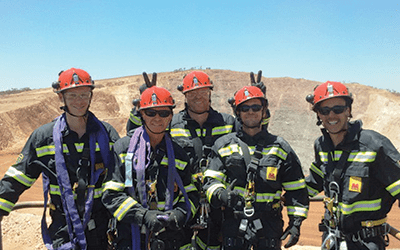
At the time of the case study, the Golden Grove Mine Rescue team was run by a full time Mine Rescue Coordinator. The person in this role is responsible for all activities associated withemergency response at the mine site, such as conducting and organising onsite and offsite training, equipment maintenance, justifying selecting and purchasing new equipment to replace aged gear, trialling and assessing new equipment, editing and creating emergency response procedures, and recruiting new members.
READ RELATED CONTENT
- Hastings Deering Rescue Partnership
- What does quality training actually mean?
- New mines rescue vehicle could revolutionise safety
A wide variety of people with a diverse range of skills and backgrounds are targeted for Mine Rescue selection. People who show initiative and enthusiasm in the workplace are invited to join by the Mine Rescue Coordinator. People with prior Mine Rescue experience from other sites often make the initial approach to join.
People from the armed forces, who have closely aligned experience or who are familiar with the discipline required, are attracted to the Mine Rescue culture.
Others, who have a poor safety history and need help developing a safety focus, may be put forward by their supervisor or the Health and Safety Manager, although this is generally not a common practice in West Australian mines.
“Involving the local community, in the form of land owners, established a valuable bridge and enhanced the credibility of the Mine Rescue team.”
Production pressures restrict the availability of people at many times. This means the first step for an interested candidate in the selection process is to gain their supervisor’s approval prior to application. Next, the onsite Exercise Physiologist conducts a fitness assessment where current health issues are assessed and old injuries from both work and home are documented.
People with medical conditions which make them unsuitable for strenuous activities are still encouraged to join, although not in an operational capacity. They are trained in all Mine Rescue theory, but fill other roles in an emergency.
For example, relaying messages, sourcing additional equipment, advising on special needs and tracking down personnel offsite, are all tasks that are better accomplished by someone with an understanding of the requirements of a Rescue Team. People of small stature who struggle with heavy workloads, such as four person stretcher transport, are also encouraged to join, and are given roles more suited to their strengths, often filling the role of Medic or Captain in the team.
With the dynamic nature of the employment market in the resources sector in Western Australia, the Mine Rescue Team are usually glad to accept anyone they can attract. There was no distinction made between contracted employees and Oz Minerals staff/operators. Some of the larger contractors have a clause written into their contract that they must supply a minimum number of people for Mine Rescue service.
This is used to advantage when high calibre individuals are identified whom the contractor may be reluctant to release from normal duties for Mine Rescue Training. Women are actively encouraged to join the Mine Rescue team. It is not unusual for women to express feelings of not being physically strong enough for the role; a discussion of the various roles available and the benefits of setting and achieving personal challenges helps to allay these concerns.
Although individual skills are a pre-requisite for an effective emergency response, just as important is the ability for rescue members to function in a team environment.
During training, it is not unusual for the Team Captain to place someone in a role they are unfamiliar with or to perform duties they might struggle with, usually placing an experienced team member alongside them to provide one-on-one tuition relating to the required micro-skills.
Conversely, in a real ‘situation’ Team Captains are trained to delegate roles and functions which take advantage of existing skills and strengths. Teamwork is promoted through a focus on communication skills, encouraging team members to help each other out, and the more experienced team members taking part in the same tasks as the newer members.
Special problems faced by FIFO commuting cycle
At the time of the case study, Golden Grove employees worked either a 4/3, 4/3, 8/6 roster, or straight 8/6 roster, while contractors worked a variety of rosters including 5/2 and 14/7.
Training was planned for all day every Thursday, and members were expected to attend one training session per month. The result is a collection of people who do not normally work together, and indeed often have only two days per fortnight on site at the same time, coming together for a day of training. This can prove challenging when there is an emergency on any other day, as it is not unusual for people to meet each other for the first time when they attend a call out. This highlights the need for Standard Operating Procedures to be adhered to during the training process.
“The result is a collection of people who do not normally work together, and indeed often have only two days per fortnight on-site at the same time, coming together for a day of training.”
Another area this variety of rosters impacts on is Mine Rescue Competitions. From each of the four panels (there are four groups of people: one on day shift, one on nightshift, and two on break in Perth) one or two members will be selected to form a team for a competition.
Rosters are shuffled for them to train together for the seven days prior to an event. Strengths, weaknesses, and personalities all need to be shared and learnt by the group in a compressed time frame. This re-shuffling of rosters can often result in people working up to three week stretches and then having two weeks off as time in lieu. This whole process is very disruptive to the workforce and frequently creates manning level issues for supervisors.
Having a variety of rosters on site, and up to four rotating crews for one job, means plenty of forward notice is required when planning training or courses. Anything under six weeks is usually ‘too rushed’ and rejected by mine management.
Turnover reduction
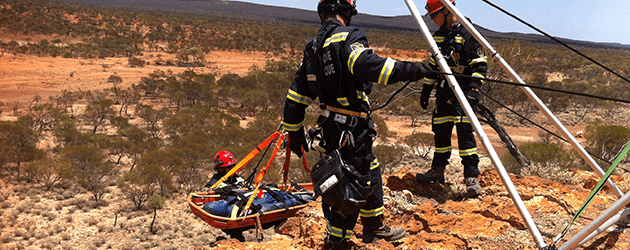
The West Australian mining industry fluctuates between extended periods of high growth and, as has occurred recently, a slowing of demand. The flow-on effects include the mobilisation of the mining workforce and the dilution of the skill sets amongst employees.
In 2009 the Golden Grove site experienced annualised personnel turnover figures of up to 50% for several months and ended the year with a 21% turnover. Wages have increased in order to remain competitive, although the preference is to stay on par with the industry average.
Whilst there will always be members of the workforce who look primarily at financial remuneration, the management at Golden Grove have found that for the majority of personnel there are other priorities which increase resistance to the lure of bigger dollars elsewhere. These priorities include a friendly, challenging and rewarding workplace, a clear career progression, a reasonable standard of accommodation with a consistent quality of food, and the provision of good amenities and sporting facilities.
A new initiative saw the introduction of strength and fitness training every Monday night in Mine Rescue member’s own time. The onsite Exercise Physiologistliaises with the fulltime Mine Rescue Coordinator to keep the program interesting and fun, and it is a requirement that Mine Rescue members attend if they are on site and not on shift.
At the time of the case study, Golden Grove had introduced a new payment system for Mine Rescue members. An annual $5 000 payment is split into each half of the year, with Mine Rescue members being required to attend their monthly training, weekly Monday night gym sessions, and any courses they have been approved for, before payment is authorised.
If a training session is missed due to work requirements, written explanation, countersigned by the Department Head, ensures payment continues. This system has shown very clearly who has their heart and mind committed to rescue training, as typically members are either fully eligible for payment, or a very long way from it; there is no-one who ‘just’ misses out.
The turnover rate of Mine Rescue members is no better than the site average. In 2009 there was a 36% turnover (9 people) with a total pool to draw on of 25 members. Intuitive reasoning indicates that mining personnel who are also rescue trained are seen as having a safety focus by other employers, and these people are often targeted with lucrative offers.
The structure of training sessions
Every Thursday is Mine Rescue training day at Golden Grove. Across the site start times vary from 5.30 to 7.00am, but on Thursday all rescue personnel start at the same time, 6:30am.
All equipment is checked at the start of every Thursday. Trucks and racks are checked off against pre-printed checklists which need to be signed and dated, and all Breathing Apparatus are fully bench tested and the results recorded. There is a natural tendency for members to gravitate towards their own strengths, and it is not unusual for the Mine Rescue Coordinator to step in and reallocate tasks.
Checking gear is a good way to get the newer members familiarised with the name and location of the gear, and also a chance for the older hands to pass on their experience in an informal manner. Missing or unserviceable gear is replaced or fixed at the time of checking; team members do not make lists of things to get fixed and ask someone else to do it. This activity is usually completed by 8.30am.
A short theory session follows the gear checking, where the discipline to be practiced for the day is discussed, and the aim of what is to be done is made clear. Each member is then allocated a specific topic and given ten minutes to research it before being asked to make a presentation to the rest of the team. For example,
if the day is to be focussed on the use of Breathing Apparatus, individual members would be asked to present a short talk on aspects such as self-rescuers, mine gasses, horn signals, map reading and first aid.
On occasions a learning opportunity is created by asking the most knowledgeable person to talk about their area of expertise, for example a Surveyor may present on map reading. At other times a member may be asked to talk about something they have little or no knowledge about, creating a strong learning opportunity for that individual. The rescue room has an extensive range of written material freely available, as well as structured training manuals to draw information from. This activity is normally followed by a short light meal, taking the Mine Rescue team up to 10am.
“The outcomes of the debrief were to buy more hand held GPS units for the Mine Rescue team, plus radios that would work offsite away from the repeater station.”
Practical exercises take up the next 4 or 5 hours, where teamwork, communication and safety are always promoted as the priorities, as opposed to focussing on just getting the job done.
A Job Safety and Environment Analysis (JSEA) is always conducted by the Mine Rescue team prior to the commencement of exercises. At this point, likely hazards are identified and discussed, and appropriate control measures are agreed upon. This is in addition to following the procedures as set out in the training manuals.
Practical exercises are usually complete by 2 or 3 pm when the team stops for another light meal. For some people this signals the time for a shower, a safety meeting, and a plane ride home to end their commute, while for others it is time to make up all the gear, clean the rescue room, and ensure things are left ‘Ready to go’.
External training is provided by a variety of registered training organisations, and is usually conducted onsite. This means team members are training with the same gear they will be using in a real situation and gives them the opportunity to become familiar with customised equipment such as fire tenders.
Members are presented with nationally recognised units of competency upon the successful completion of each course, and after completing all courses are eligible to apply for Certificate 3 in Response and Rescue. Many team members place great value on achieving this certificate as it holds good currency when applying for positions at other operations.
The testing of readiness through onsite scenarios and competitions
Golden Grove Mine Rescue Team participates in four site-wide mock emergencies each year. These cover all the mining crews and test a variety of response callouts. Airstrip crash landings, underground fires and hazardous chemical spills are the major events that involve a site-wide response.
These are all conducted according to (former Oz Minerals) Golden Grove site procedures. In addition, once a year an external consultant runs a site-wide emergency with no warning. Role players act as relatives of deceased, media representatives and external government organisations are recruited onsite. The scenarios also involve Head Office, testing their coordination and rapid response protocols. All scenarios are logged and minutes kept, with much of the learning occurring in the debrief, where everyone involved has the opportunity to contribute.
Golden Grove sends Mine Rescue teams to annual rescue competitions with two aims. First, new members are ‘blooded’ in these pressured situations and gain experience in responding under emergency conditions, whilst experienced members get the opportunity to pass on skills and knowledge to the newer members.
Annual competitions held in Kalgoorlie are regularly attended, Surface Competition in May and Underground in November. The Victorian competition, held in August, is attended infrequently. This latter, once in a while opportunity to travel interstate, is a ‘reward’ for good results in the domestic events, and typically team members push themselves hard to reach this level of excellence.
Overall benefits to workplace and specific benefits to individuals
Workplace benefits of mines rescue
A major company benefit for encouraging an effective Mine Rescue team is that a number of requirements placed on Mine Managers are fulfilled. Some are legislative (MSI Act 1994, ISO 14001); others involve complying with the Civil Aviation Authority, and the Local Emergency Management and Control (LEMAC) requires the mine to work in conjunction with the local Police. Maintaining an effective Mine Rescue team also fulfils a part of the mine’s social obligation towards the local community.
Many workers derive great peace of mind knowing there is a trained and equipped Mine Rescue team on hand 24/7.
“The Mine Rescue team was assembled quickly and ready to go in less than thirty minutes.”
Examples of recent events attended by the Golden Grove Mine Rescue team include a tourist bus rollover involving eleven people, three of whom were airlifted by the Royal Flying Doctor Service; extinguishing a fire in a local schoolhouse; a stores truck rollover, and attending to various underground injuries such as fractured legs and an underground finger amputation.
Individual benefit of mines rescue
Participating in a Mine Rescue team benefits individuals through increased personal safety behaviours and awareness, and provides the opportunity to achieve nationally recognised competency certificates in Mine Rescue, Public Safety, First Aid, and Land Search and Rescue. Being in a position of safety leadership requires consistent safety consciousness and team members take their safety credibility very seriously.
CASE STUDY A practical example in mines rescue
On the Easter long weekend in 2007 Golden Grove experienced a particularly hot spell, with temperatures in the high 30’s. Two families drove up from Perth on Good Friday and camped on an adjacent lease for a gold prospecting holiday. They were in two cars, with four adults and three children aged from seven to fifteen years.
On the Saturday morning the fifteen year old son decided to go goat hunting, and wandered away from the campsite armed with a crossbow. When he did not return after several hours his parents became worried and arrived at the mine gates at lunchtime to report he had gone missing and requesting assistance. Golden Grove was the closest form of help for hundreds of kilometres.
The Mine Rescue team was assembled quickly and ready to go in less than thirty minutes. As it was the Easter long weekend, many personnel had taken un-rostered leave, with the result that no experienced leaders were onsite.
A young, upcoming rescue member assumed leadership of the situation. The Mine Rescue team were required to coordinate the search, using two local police from Yalgoo. They enlisted the help of local landowners, organised the use of a search plane from Geraldton, notified and placed on stand-by planes in Perth, and alerted the Royal Flying DoctorService.
This was not a scenario they had ever trained for so the leader had to go back to basics and apply first principles to coordinate the ground search. He enforced a line of sight arrangement between searchers, utilised two-way radios, and used the standard Captains Briefing Sheet to obtain information from the family. This proved particularly difficult as the parents had lost their only other child the year before in a drowning accident, and consequently were in a disturbed frame of mind.
RELATED CONTENT
The search went from lunchtime and started in the area around the family’s campsite. Using local trackers to follow signs, searchers spread out in a line of sight until darkness fell; simultaneously, planes were searching overhead. The search was called off at dark and restarted at first light, resuming tracking and search patterns and utilising additional help from landowners on motorbikes working to the same grid pattern.
The plane also resumed searching when it arrived back from Geraldton, from where it had returned for refuelling overnight. Tracking was only good for two or three kilometres, after which the boy’s tracks were lost on the stony ground. He had followed the goats for as far as he could before realising he was hopelessly lost.
At midday on Sunday the boy was located fourteen kilometres from the family’s camp by foot searchers, huddled in the burnt out shell of a caravan, semi naked, suffering mental confusion, and dehydrated. He was given oxygen therapy, taken to the Golden Grove medical centre, put on drip, and monitored until he had fully recovered. This took the rest of that day.
A de-brief was held straight after the boy was delivered to the medical centre and was attended by everyone involved, including the police, Mine Rescue personnel, local land owners and trackers. The outcomes of the debrief were to buy more hand held GPS units for the Mine Rescue team, plus radios that would work offsite away from the repeater station.
An overall benefit of the operation to the Golden Grove workplace was the increased confidence of the workforce in its Mine Rescue team. Involving the local community, in the form of land owners, established a valuable bridge and enhanced the credibility of the Mine Rescue team. The local Police, frequently young and inexperienced officers doing country time, commended the organisational skills of the Mine Rescue team. The possibility of providing aviation fuel onsite so that the plane would not have to return to Geraldton for re-fuelling was discounted as it would involve too many other measures – such as fire-fighting facilities and environmental measures at the re-fuelling location.
All in all it was a challenging situation with a highly successful outcome.
This article is reproduced with permission from the Australian Government Attorney-General’s Department.
References
Bryans, P., & Smith, R.2000. Beyond training: reconceptualising learning at work. Journal of Workplace Learning12 (6) 228-235
Kubler, D.2002. Who benefits from workers with general skills? Metroeconomica53(3) 290-314
Liu, J., Srivastava, A., & Woo Hong S.1998. Transference of skills between sports and business. Journal of European Industrial Training. 22(3) 93-112
Seymour, B., Kinn, S., Sutherland, N.2003. Valuing both critical and creative thinking in clinical practice: narrowing the research-practice gap? Issues and Innovations in Nursing Practice. 42(3) 288-296
Valerie Ingham is a lecturer in Emergency Management at Charles Sturt University. Her research interests include time-pressured decision making and the tertiary education of Emergency Managers. Email: vingham@csu.edu.au
Ben Ingham has worked in the mining industry for 20 years. His focus is people management and in the role of Safety and Organisational Improvement Manager he helped transform leadership and employee behaviours for one of Australia’s leading mining companies. Currently, he works as a consultant in both Mine Rescue and Safety Leadership. Email: beningham64@hotmail.com
Read more Information on Mines Rescue and Emergency Management


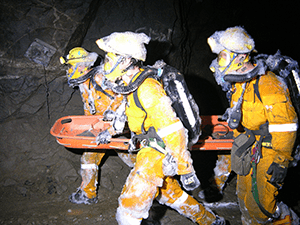
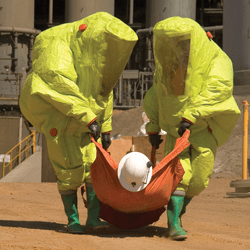
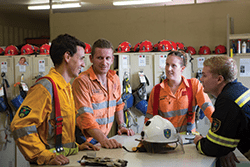


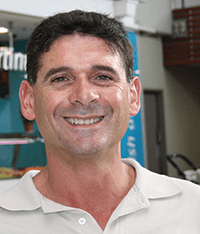
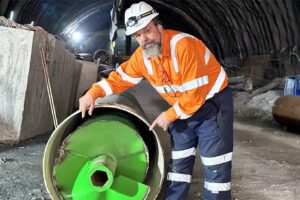
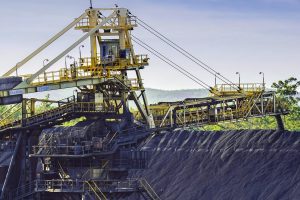
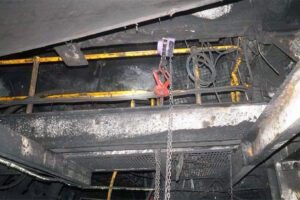








Add Comment